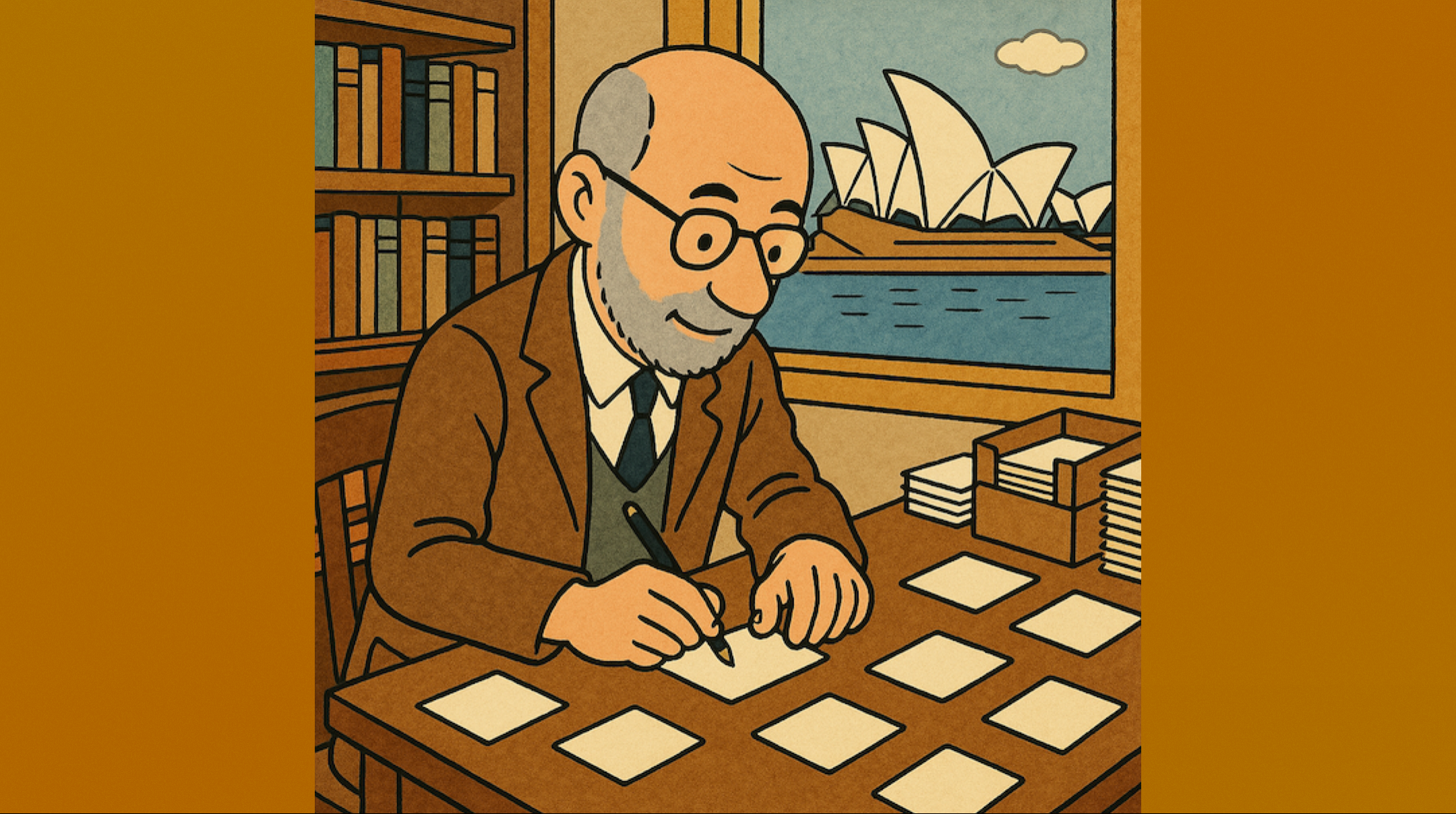What to do when you've made some notes: Start writing
I’ve previously suggested “just make notes”, and perhaps by now you have created plenty of notes. Fantastic! You can congratulate yourself. You are making progress. Even a small pile of notes is much more useful than a big pile of nothing.
“But what now?” you say. “What am I supposed to do with all these notes? I mean, it just looks like a random pile.”

Fulgence Tapir was overcome by his notes but you don’t have to be.
The next step: produce something from your notes.
Don’t worry about organisation, indexing, keeping track. It’s literally impossible. There’s too much to know. The noble quest for perfect notes is a digression. There is no league table of note-makers. There are no note-making prizes. German sociologist Niklas Luhmann’s notes were said to be “chaotic”, yet he published prolifically. Notes may have been the method, but the aim was writing for publication.
What comes next, then? Don’t wait until your notes are correctly sorted, perfectly aligned with the Dewey Decimal System or with the cycles of the moon. No, this is what comes next: a single finished product.
The way to move forward is to make a completed product from the notes you have to hand. It can be small. Perhaps it had better be small. What are big things made of if not smaller things?
The Internet is great for this because it’s very friendly towards short texts of all kinds. Social media posts and threads, blog posts, ‘listicles’, YouTube or podcast scripts, email newsletters, short stories on fan sites. They’re all quite short and you can write one fairly quickly when you have your notes beside you.
Strange as it may seem, doing a PhD is also great for this, even though it takes years, because there are plenty of mini-projects along the way. For example:
- literature review (5,000 words),
- project proposal (<10,000 words),
- conference or workshop paper outlining your work program and progress (2-3,000 words),
- article in The Conversation, or similar general-public facing site (1,000 words),
- draft chapter for your supervisor’s review (2-4,000 words).
The list goes on. And if you’re not pursuing a PhD, you can make a list that’s relevant to you. Every large project can be broken down into smaller, achievable parts. Just make something, and like a stairway to heaven, the way forward will appear.
“Ah, but I can’t make anything,” you say, “I can’t find the right notes.”
Just join one note to another, then do it again. Build a short, finished piece of writing the way you would build a Lego model: one block and then another block, until it’s done. Follow the links in the notes if you like. They form a trail of breadcrumbs through the forest, to relieve you of having to remember where you were going. And that’s how you write a whole article really, or even a whole thesis or a whole book. It’s always just one piece and then another piece until it’s done.
“Oh, but this is just an unreadable mashup of random, disconnected thoughts”, you say.
Yes, exactly that. This is what is known to experienced insiders as a first draft. And the first draft is supposed to be the worst draft. After that, things just get better.
So here is the process in a nutshell: get it done, then get it good. Write a first draft, then write a second, edited draft. Rest assured, the second draft will be better. And so on.
A word of warning: don’t mistake a note for a finished piece of writing. A note is the shortest meaningful piece of information, or the shortest viable writing session. If it works well that’s because it links to other notes. When you write for any kind of publication you always need to be aware of the context of your writing. And it’s rarely if ever suitable just to dump a note or two into it. Editing is an unavoidable, essential, and essentially creative step.
Well there you have it, and now you have left the sheltered county of notes and entered the big, wide realm of writing. Enjoy the journey and good luck!

A completely accurate image of my writing process, accurately captured by the latest advances in AI.
I’m the author of Shu Ha Ri: The Japanese Way of Learning, for Artists and Fighters. It’s a short and accessible introduction to the concept, available now.
And if you liked this article, why not subscribe to the weekly Writing Slowly email digest?